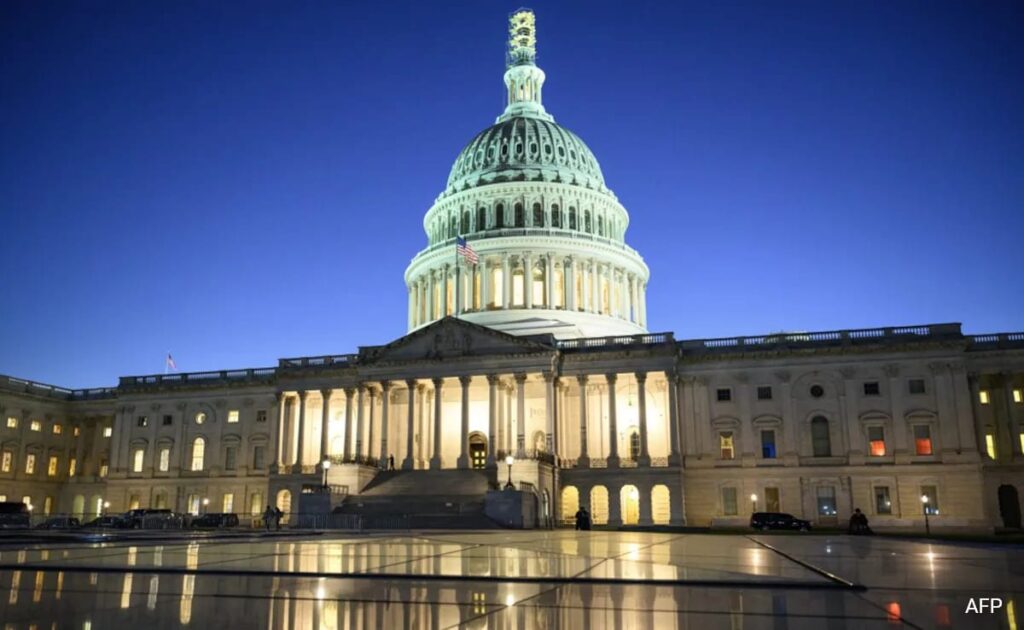Washington DC:
US President-elect Donald Trump’s Republican Party won enough seats to retain control of both houses of Congress, cementing its dominant performance in the 2024 US elections. In Washington, D.C. political parlance, the fact that the president’s party also controls Congress is called the “governing trifecta.”
As Republicans tighten their grip on the “Washington Trifecta,” Trump takes command of the Oval Office and delivers on his legislative priorities, including key poll promises to enact immigration regulations and reduce regulations. Therefore, it will have even broader powers next year. Wall Street, the energy industry, etc.

Even if Trump had not won a majority in Congress, his landslide victory over Democratic rival Kamala Harris would still have given him significant control over the formation of the federal government and U.S. foreign policy. However, both are likely to undergo major changes during the administration. But the governing “trifecta” makes it easier for the next president to win approval for candidates for positions within his administration. This is something he struggled with during his first term in 2017, when resistance within the Republican Party was notable. Higher.
How does the U.S. Congress work?
The U.S. Congress has a total of 535 members, including 100 senators and 435 representatives. Each of the 50 U.S. states sends two senators to the U.S. Senate. However, a state’s representation in the House of Representatives is based on population. For example, a small state like Vermont has one representative, while a large state like California has 53 representatives.
The term of office for members of the House of Representatives is two years, and all 435 seats are up for election every even-numbered year. This is in sharp contrast to the Senate, where senators serve six-year terms. Senate elections are spread out over even-numbered years, so only about one-third of the Senate is up for re-election in any given election.
Once common, single-party parliamentary control has become rare in recent decades, with the party in power losing seats during midterm parliamentary elections every two years. Both former President Trump and President Joe Biden enjoyed a “trifecta” in their first two years in the White House, but the balance of power has shifted following midterm polls.
Does “Trifecta” guarantee absolute power?
The “trifecta” does not guarantee that political infighting will be prevented. Despite the Biden administration boasting a “trifecta” from 2021 to 2023, internal dissent continued, with figures like Arizona independent Sen. Kyrsten Sinema resisting party orthodoxy. thwarted certain policy priorities.
A major obstacle to full control for either party is that legislation requires a three-fifths majority, or 60 out of 100 votes, to pass in the Senate. Therefore, parties need to have a healthy majority in the Senate to avoid the filibuster and the tradition of open-ended debate. So if one party has a simple majority in the Senate, it will need to reach across the aisle to pass legislation.
According to a report in the New York Times, Trump is likely to win a healthy majority in the Senate this time around. But despite this, he may not have the magic 60 seats that would allow him to overcome opposition efforts to delay the bill.
Moreover, there are already signs that Donald Trump may not always get his way, even though the president is reportedly pushing Rick Scott as his possible successor. has elected John Thune as Senate Majority Leader.
Trump has not formally endorsed Scott, but US media have seen Thune’s selection as a sign that some Republicans are asserting their independence.
How the “trifecta” benefits Trump
All things considered, if managed wisely, the “three-way” could pave the way for the possibility of significant legislative initiatives. A majority in both houses of Congress could give Mr. Trump an advantage in pushing forward with his right-wing policies and big poll promises, including the largest immigrant deportation in history, sweeping tariffs on foreign imports, and rolling back environmental protections. be.
The NYT reports that using the law to achieve these goals would make it much harder to overturn it in court, especially since the judicial climate is also tilted in Trump’s favor. The former president was able to place three conservatives on the Supreme Court in his first term, solidifying a two-thirds majority for years to come. He also appointed more than 40 judges to federal appeals courts, bending some circuits in a more conservative direction.



